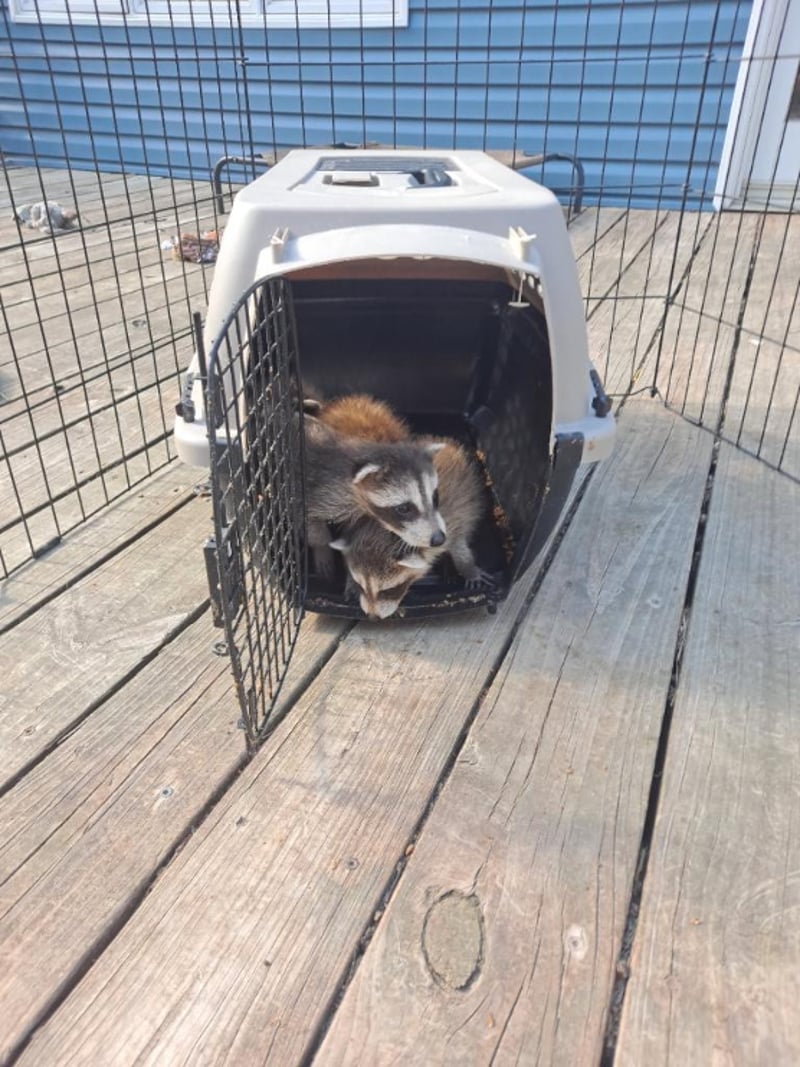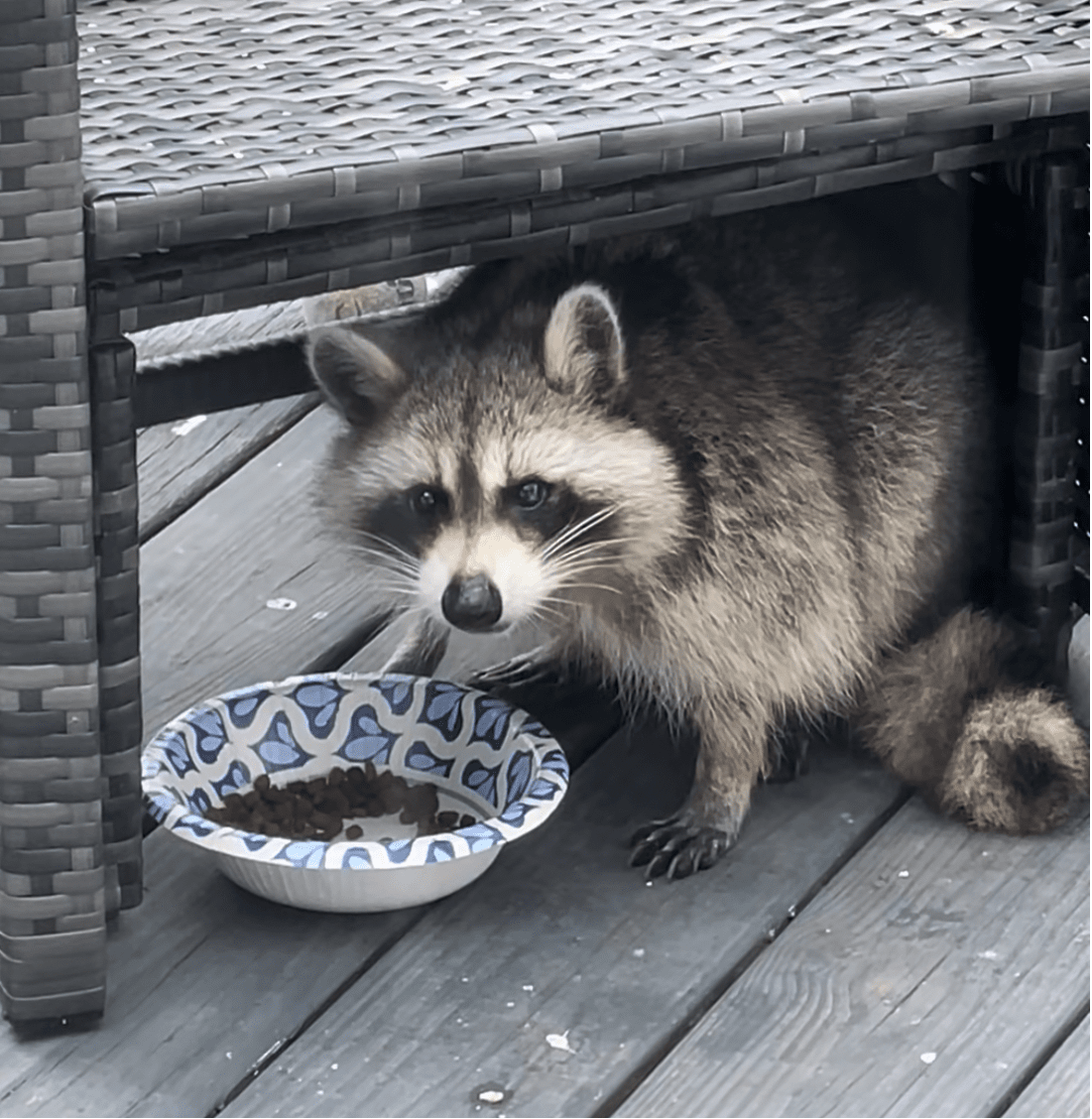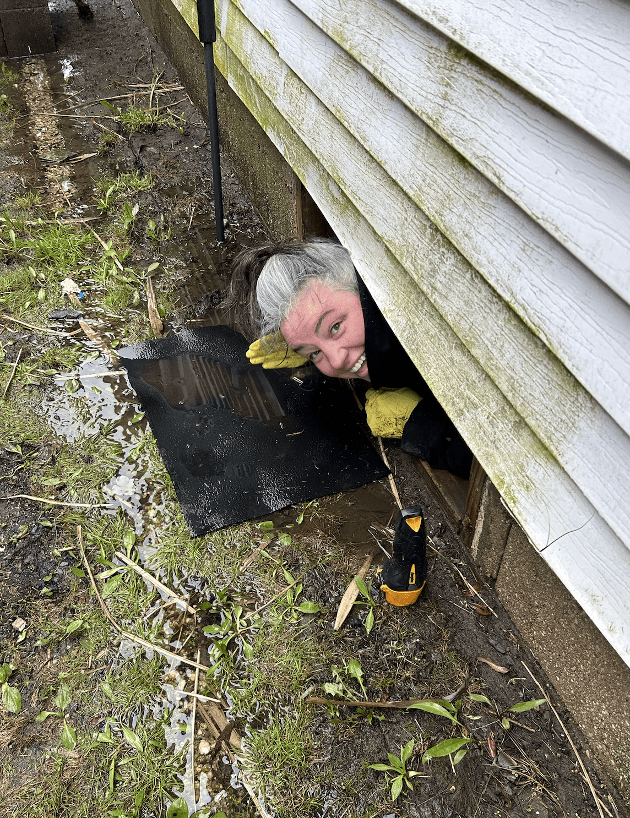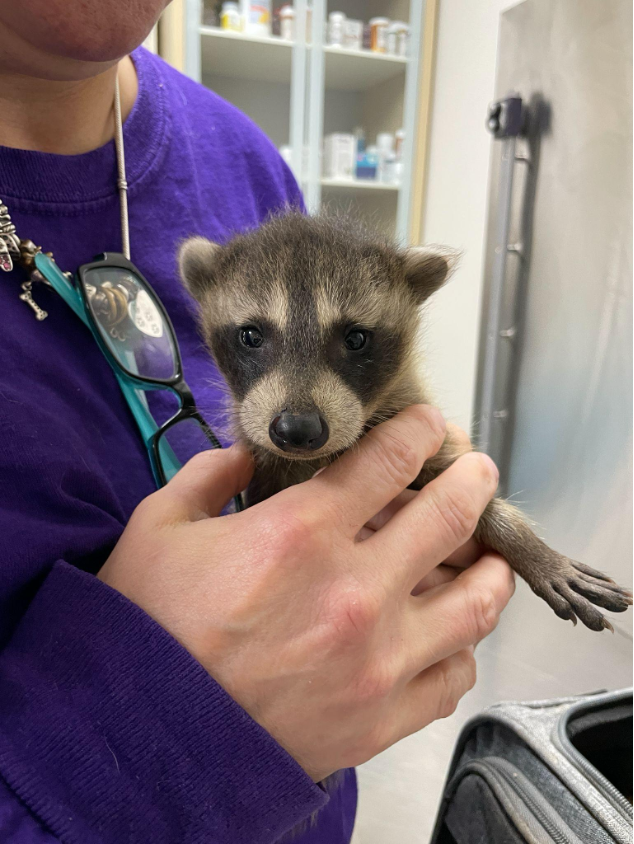
I called her Greedy, and she was anything but.
One night, I looked out my front window and saw a raccoon on my porch. She was scraggly like she had weathered more storms than she should have. Under the dim porchlight, I watched as she devoured the entire bowl of dry cat food I had left out for the abandoned cats in my neighborhood.
“Okay,” I thought. “I’ll just put some more out when she leaves with a fresh bowl of water.”
In the morning, I checked my porch camera—I saw Girlie Girl and Cow Cat, the two cats who had been abandoned by my neighbor’s son when she died and he sold the house—and then, the raccoon came back. She ate what was left in the bowl, and when Girlie Girl came back for another snack, she was severely disappointed.

“What a greedy raccoon,” I muttered. And just like that, her name became Greedy—though the more I got to know her, the more I realized she was anything but.
When I saw Greedy out during the day a few times, I grew concerned. Daytime activity in raccoons can sometimes indicate illness, so I contacted a wildlife rehabilitator who specializes in vector species—animals like raccoons, often misunderstood and unfairly labeled as dangerous. The rehabber asked thoughtful questions, reviewed photos and videos, and reassured me that Greedy was perfectly healthy—just hungry.
That simple truth hit me harder than I expected. Here was another living being, forced to scavenge at all hours in a world that had no space for her. A world where food was hidden behind walls and glass, where people saw her not as a living being but as a problem to be eliminated.
I work from the comfort of my house, and my office happens to be facing the front, so I can watch the neighbors walk their dogs and the bay waves hit the shore. One day, I noticed the neighbor’s son (the same one who abandoned the cats) walking around with another man—holding a metal baseball bat. The other man had a metal pipe.
They walked right onto my lawn and onto the neighbor’s lawn. Curious, I went outside and asked what they were doing—it’s not every day someone’s walking around with metal pipes and baseball bats. They said they had seen a “rabid raccoon” and were going to kill her. When I explained to them that I spoke to a wildlife rehabber, that this raccoon was healthy and there was nothing wrong with her, they shooed me off—but not after telling me that if they caught her, they would drown her.
Devastated, I did everything I could to try to save her, but a week later, Greedy was trapped.
By law, if a raccoon is trapped in New York State, they have to be killed. Oftentimes, this is done by horrific methods, including drowning and/or being shot, so that the animal’s brain can be preserved for rabies testing.
So when Greedy was caught, I was more than devastated. I watched as the New York State Department of Environmental Conservation (NYS DEC) officer ruthlessly moved her from the trap into a transport crate—Greedy, screaming, and trying to claw her way to freedom. I rooted for her to escape, knowing there was absolutely nothing I could do to stop this from occurring.
I have been in animal activism for over fifteen years—and there have been very few times when I felt completely hopeless to protect animals. This was one of those times.
The NYS DEC truck drove off, with Greedy inside of it, and I knew by the morning she would have taken her last breath. I spent the night sobbing, and even writing this a year later, I can barely get the words out as tears well up in my eyes.
“I failed her,” I said over and over again, mostly to my dog, Atlas, who couldn’t understand why I was struggling to breathe myself.
The next morning, I woke up slowly. My eyes were swollen from the night before, and my head was pounding from the dehydration of crying out every ounce of water my body possessed. And then I got a call from my neighbor across the street (who vehemently opposed the killing of Greedy).
There were kits under their house. Living in the crawlspace.

When I went to look into the muddy, damp crawlspace, I saw a baby raccoon—who couldn’t have been more than a few weeks old—calling for their mother. In the darkness, I heard another and shined my flashlight into the corner. I could see part of the insulation Greedy had removed in order to crawl into the rafters and make a warm nest for her kits.
I called the rehabber and let her know the situation. If I could catch the kits, she would take them, raise them, and release them come fall. So, I went back to my house, changed into clothes that were slightly water-resistant, and grabbed a cat carrier. Then, I went under the crawl space.

I got the first three kits and brought them home to stay overnight until I could drive to the rehabber’s place about an hour east of me. But the next morning, my neighbor left me a voicemail around 5 AM. There were more. She could hear them.

Back under the crawl space I went. I was cold, I was wet, and there definitely was sewage under this crawlspace, but I heard more kits crying. I couldn’t see them or get them, as they were up in the rafters, so I took the kits in the cat carrier and put them in the crawl space for two hours in order to lure out the others.
It worked.
Five kits. Five tiny, orphaned souls who lost their mother to human cruelty. A mother who had only been trying to find enough food to keep them alive.
The last update I had from the rehabber was that each of the kits were strong-willed rascals, who would thrive back into the wild. They were released last fall, and I hope they get to enjoy the life their mother had taken from them in a world that was not built for her.